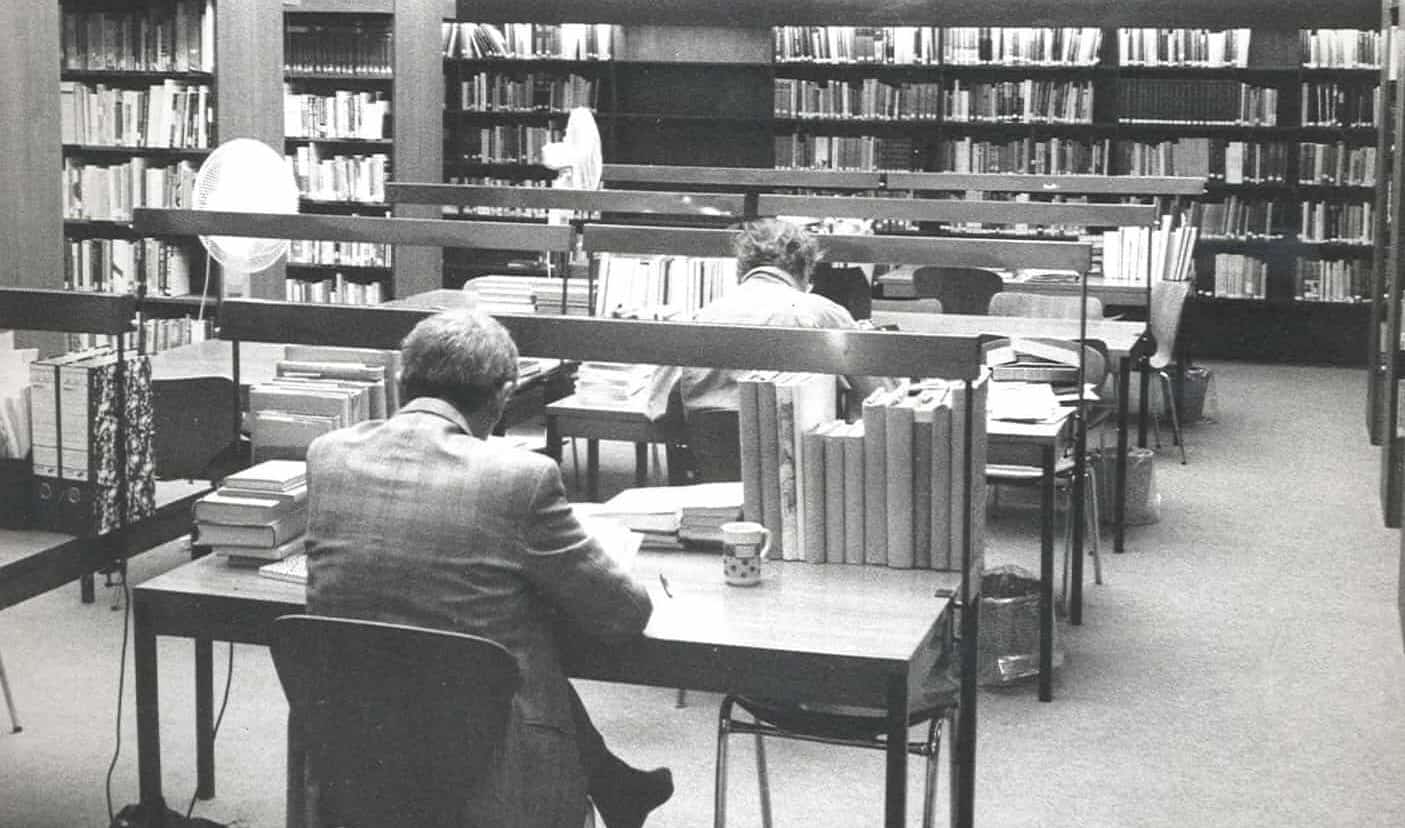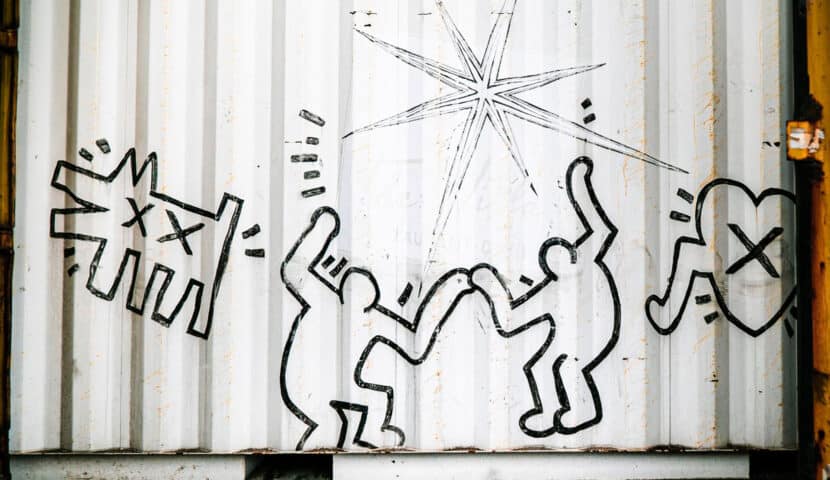From the archives: The library as a social club
Daniela Charbit | 03.07.2022 | Photo: The Van Leer Jerusalem Institute

How did the library become the Van Leer Jerusalem Institute’s informal parliament? What world event disrupted its total silence? And has the mystery been resolved of who was the first research fellow to sit in the library?
As in our previous archive column, in which we told the heroic story behind an emotional photo from our archives, we set out to investigate another story from the Institute’s past. This time the story is about the VLJI library, founded in 1970 and currently containing more than 40,000 books and periodicals. The Institute now has two separate libraries: one in the historic Van Leer building and the other in the building of the Polonsky Academy. New library fellows join it each year after applying and being admitted as members, but there are also some who have sat there since the library was founded. They are men and women researchers in the humanities, natural and social sciences. But how was the community of library members created and how did it become what it is today?
A human and social mosaic
We asked Prof. Itzhak Galnoor, a research fellow at the VLJI with a rich political and academic resume, who penned some of the Institute’s most important publications and was among the founders of its Chazan Center for Social Justice and Democracy.
Galnoor began his sojourn in the library in 1972 as a member of a research team on national planning headed by professors Yehuda Elkana (the Institute head at the time) and Shmuel Noah Eisenstadt (works by whom and about whom were published by the Institute). Galnoor had just become a father, and his crowded home along with Elkana’s offer led him to work in the library. Galnoor was the first person to sit in the library, then consisting of a single, empty story. Slowly he was joined by researchers from various fields, who also added a variety of books to the library. They included Avishai and Edna Margalit, the poet Harold Schimmel, Ruth Katz, Moraleh Bar-On, Avigdor Levontin, Yael Atzmon, and occasionally Gershom Scholem and none other than Lord Edwin Samuel. Galnoor recalls that Haim Gouri also frequented the library and got into “vigorous discussions” with him. Important guests from overseas occasionally visited the library and later mentioned it in their books.

The atmosphere may have been serious and grave, as befits a library, but between smoking breaks and snack breaks in the garden and the adjacent cafeteria, the clamorous outside reality shook the researchers. Galnoor recalls how in 1976, into the absolute silence of the library burst a boisterous group and announced the Entebbe hostages had been rescued (before word of the dead and injured had arrived), and brought the entire library to its feet.
And what about the unresolved question: Who sat in the library longer: Itzhak Galnoor or Avishai Margalit? The answer is simple: Galnoor got there first, but took a break in the late 1990s; Margalit, on the other hand, came a little later but stayed the whole time, so his is the longer stay.
So the library can be called an intellectual club, an aesthetic Jerusalem cultural center in which it is pleasant to sit, and mainly an inviting social center to go to for a chat, for research, and for book recommendations. Most of the denizens of the library were never Institute employees, yet they were and still are part of the expanding community that is growing along with the Institute.
And perhaps that is part of the realization of Polly Van Leer’s vision.




